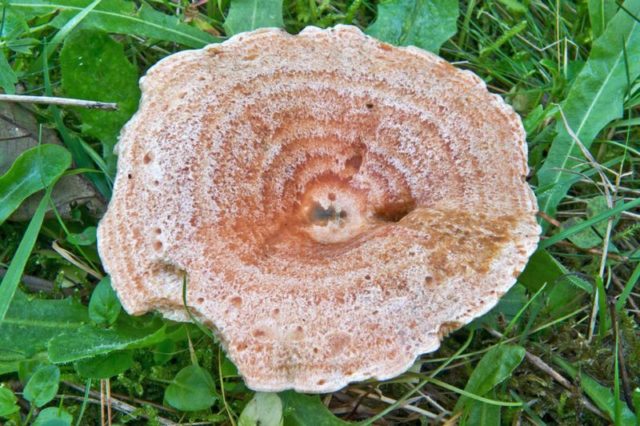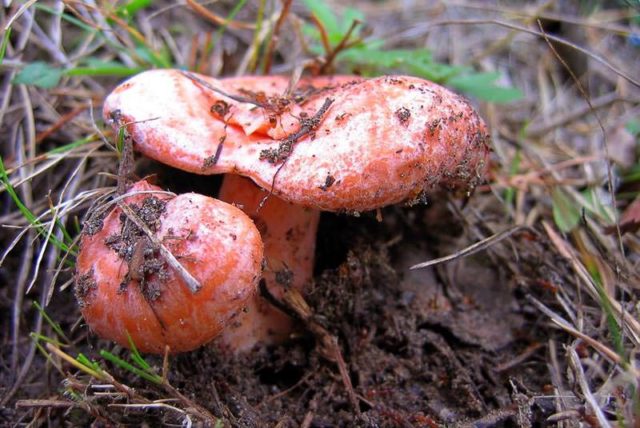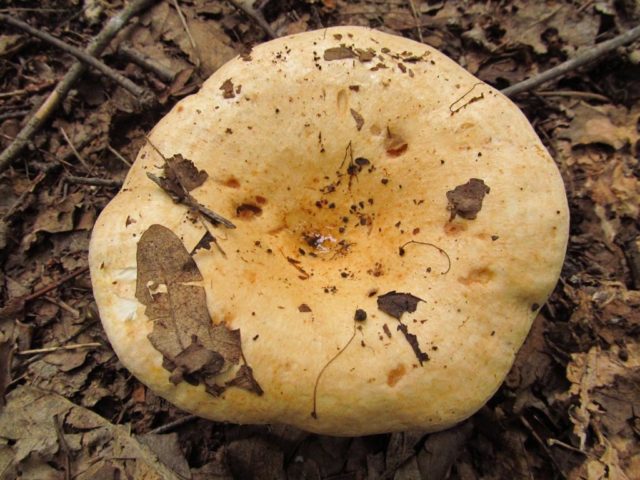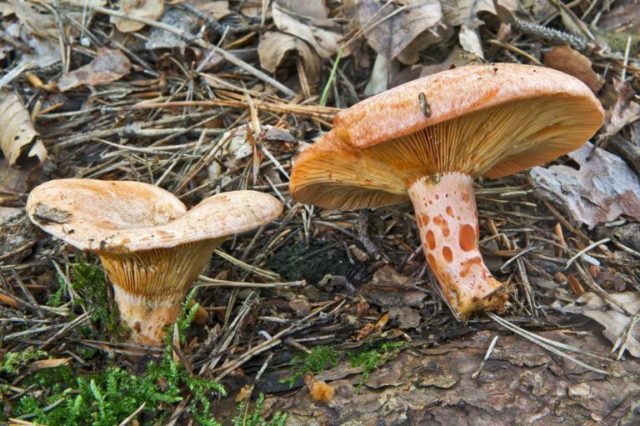Content
Japanese mushroom is an edible and rather tasty mushroom that does not require lengthy processing. The fungus has a lot of useful properties, which you should familiarize yourself with in more detail.
Where do Japanese mushrooms grow?
The habitat of Japanese fungi is mainly Primorsky Krai, especially its southern part. Mushrooms are also ubiquitous in Japan. They can be found both in coniferous and mixed forests, and fungi most often enter into symbiosis with whole-leaved fir.
What Japanese mushrooms look like
In size, Japanese saffron milk caps are small - the diameter of their caps usually does not exceed 8 cm. In shape, the caps are flat, with tucked funnel-shaped edges and a slightly depressed middle. A characteristic feature of the fungus is clearly visible concentric circles on its cap. The shade of the saffron milk cap is usually pinkish, but orange or red mushrooms can also be found, in which case the circles will have a terracotta shade.
The leg of an edible fungus of this species rises on average 7 cm above the ground, in structure it is thin and rather fragile, because it is hollow from the inside. At the top of it, a thick white line runs around the circumference.
Is it possible to eat Japanese mushrooms
You can eat fungi without fear, they are completely safe. This type of camelina does not require a long soaking before cooking, it is almost impossible to get poisoned by the product, provided it is collected correctly.
Mushroom taste
Japanese camelina does not belong to the category of "elite" mushrooms, its pulp has a rather bland taste. But if you combine the fungus with spices and herbs, as well as add it to meat and vegetables, it will be able to give new shades to familiar dishes and will delight you with a pleasant taste and texture.
Benefits and harm to the body
Eating Japanese mushrooms in food is good for health, these mushrooms contain many valuable vitamins and minerals.
- The fungus contains a large amount of carotene; it is vitamin A that is responsible for the bright orange color of the cap. Vitamin A is very beneficial for human vision and also improves skin condition.
- The composition of camelina contains vitamins of the B subgroup, they are useful for the nervous system and muscles, it is recommended to use them with intense physical and mental stress.
- Japanese camelina contains ascorbic acid, due to this, the mushroom has a beneficial effect on colds and infectious diseases.
- The pulp of the Japanese fungus contains a large amount of amino acids; mushrooms are a valuable source of protein and are almost as good as meat.
- The fungi contain the valuable substance lactarioviolin, a natural antibiotic that helps to cope even with very severe bacterial ailments, such as tuberculosis.
Japanese fungi contain natural saccharides and ash, fiber and mineral salts - phosphorus, iron, potassium, calcium and others.
Although the benefits of this species of edible mushroom are very great, sometimes the fungus can harm the body. A contraindication for him is, first of all, an allergy - if it is available, it is strictly forbidden to use the product.
In addition, mushrooms that are attractive in appearance and safe in description should not be consumed:
- with gastritis;
- with a tendency to constipation;
- with pancreatitis or problems with the gallbladder;
- with a tendency to muscle weakness.
False doubles
Despite the fact that poisonous mushrooms, indistinguishable from Japanese camelina, do not exist, the fungus can be easily confused with other varieties of camelina. Most likely, this will not lead to unpleasant consequences, and yet it is better to learn how to accurately distinguish mushrooms from each other.
Red mushroom
This fungus belongs to the edible category and resembles Japanese camelina with a bright orange-red color. The main difference is that the red variety of the mushroom does not have diverging circles on the surface, and the diameter of the cap can reach 15 cm - the red mushroom is larger. In addition, its blood-red sap, which stands out at the break, turns purple from contact with air.
Spruce mushroom
The Japanese variety can be confused with the spruce mushroom, since both fungi can have a pinkish cap. But if you break the spruce in half, then both its pulp and milky juice will quickly turn green on the fault line, but this is not typical of the Japanese fungus.
Oak lump
The oak mushroom has a similar structure and color, but it can be distinguished primarily by its milky juice. It is white in the milkweed, does not change color in the air, and the Japanese fungus releases a rich red juice.
Of all the false counterparts of the Japanese fungus, oak is the most dangerous. It belongs to the category of conditionally edible fungi, it cannot be eaten raw, the pulp must be soaked for a long time before processing. Otherwise, the bitter mushroom can provoke food poisoning.
Collection rules
Japanese camelina does not belong to the category of rare mushrooms, but not everyone can eat them. The distribution area of the fungus is rather narrow - it is found only in Japan and in the Primorsky Territory in Russia, and it grows exclusively near fir trees.
Japanese fungi begin to grow in July, but most of them can be found in September and October. At the same time, the harvest of fungi directly depends on how rainy the summer turned out to be, after heavy rainfall in July and August, especially a lot of mushrooms grow in coniferous and mixed forests.
When collecting Japanese saffron milk caps, you should follow the general rules. Fungi are harvested in ecologically safe areas away from roads and industrial areas. They must be carefully unscrewed from the ground or cut with a knife; you should not pull out the mushroom along with the mycelium.
Use
Japanese mushroom can be processed in almost all existing ways, with the exception of drying. The mushroom can be salted and pickled, fried and stewed, boiled and used as a filling for pies and omelets. Often the product is added to salads with vegetables and herbs - the mushroom gives them a very pleasant taste.
It is important to note that the fungus does not need to be presoaked. Before cooking, it is enough to simply wash it thoroughly to clean the cap and leg of adhering soil and forest debris.
Conclusion
Japanese mushroom is a completely versatile, tasty and easy-to-cook edible mushroom.Its only drawback can be considered a narrow distribution - in most of the territory of Russia, it simply does not grow. However, residents of Primorye can collect this mushroom annually in large quantities.













